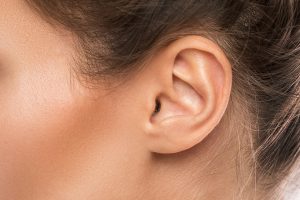If you or your child are dealing with misshapen ears, whether congenital or resulting from injury, ear surgery can improve appearance. Otoplasty is the formal term for ear surgery that repairs deformities or makes ears more attractive. Top Mount Vernon facial plastic surgeon Dr. Jonathan Grant of Cascade Facial Surgery & Aesthetics explains how otoplasty offers improvements for misshapen ears, whether present at birth or resulting from injury.
Otoplasty
Ear deformities affect self-confidence. Children with misshapen ears are often teased or socially excluded. Otoplasty does more than improve a patient’s appearance. The procedure can also boost self-confidence considerably. For many children — and adults — otoplasty is transformative.
To achieve symmetry, otoplasty is usually done on both ears. Anyone over the age of 5 may undergo otoplasty to correct misshapen ears. (That’s when ears reach their full size.) The surgery does not affect hearing ability or change ear location.
Misshapen Ear Types
Ear deformities fall into several types. These include:
- Birth defects – Some babies are born with a partial or missing ear.
- Traumatic deformities – Sports injuries, motor vehicle accidents and assaults are common causes of traumatic ear deformities.
- Unusually-shaped ears – Most commonly, protruding, drooping or overly large ears.
Otoplasty Procedure
Dr. Grant typically performs otoplasty with just local anesthesia but does offer sedation and general anesthesia for some patients. Children may require general anesthesia for their comfort.
The actual surgery depends on the patient’s type of misshapen ears. For instance, protruding ears usually result from an absence of a fold within the ear cartilage. The surgeon remedies the protrusion by creating a fold in the cartilage. This fold enables the ears to lie flat.
Microtia, a condition where the ear is very small or virtually nonexistent, requires several surgeries over time. Cartilage is obtained from the child’s ribs to replace ear cartilage.
Since each otoplasty is unique, the length of time required to perform the procedure varies. The surgery itself lasts between one and three hours.
Otoplasty Recovery
Expect to go home after the surgery wearing dressings and bandages on the ears. Length of recovery depends on the extent of the surgery. Adults must stay home from work for about five days, while children may miss a week of school.
Sleeping with the bandages on is often difficult. The doctor will provide instructions on ways to get a good night’s rest even while wearing bandages.
While otoplasty does cause scarring at the incision site, over time these scars will fade.
Contact Us
If you would like more information about misshapen ear correction, call Cascade Facial Surgery & Aesthetics in Mount Vernon today at 360-336-1947 or contact us online to schedule a consultation with dual board-certified facial plastic surgeon Dr. Jonathan Grant.








